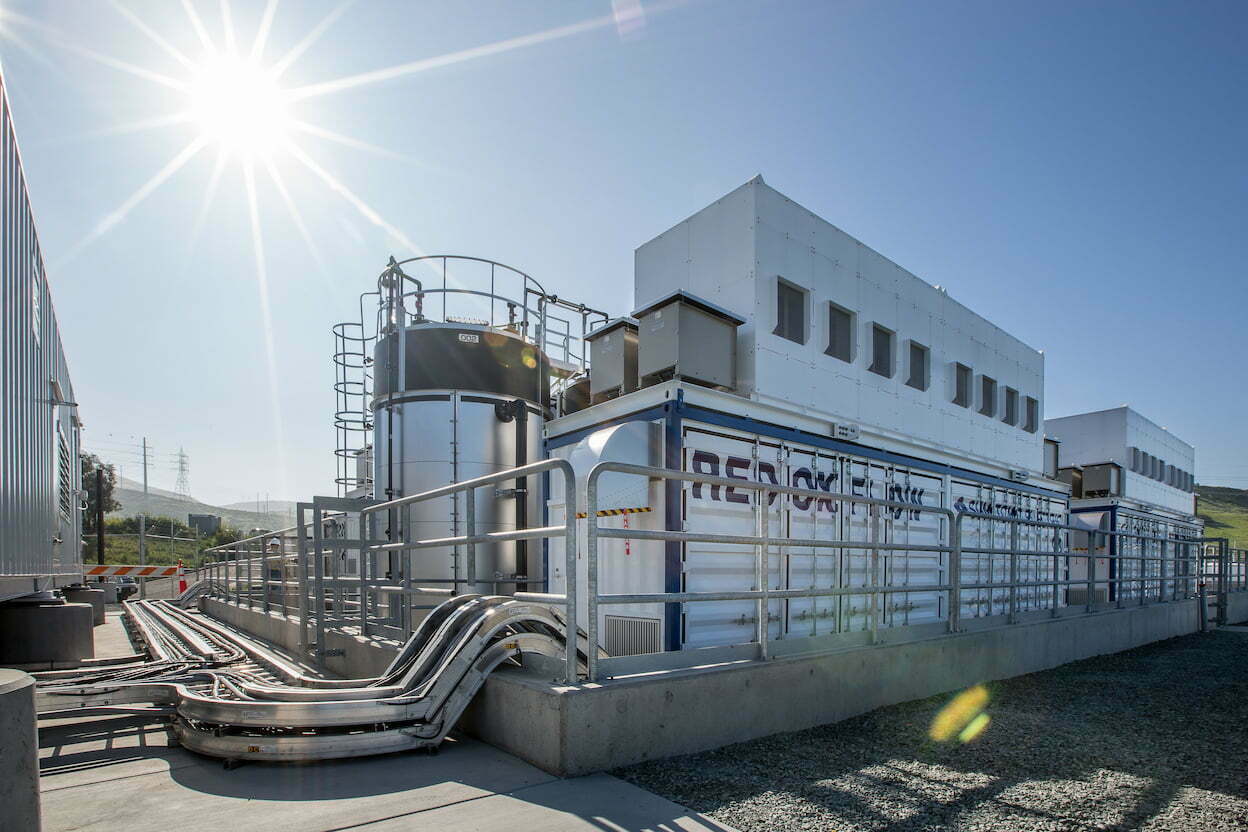
The RFP is open to both inverter-based and non-inverter-based technologies, which can provide energy storage with a 10-hour discharge duration at full-rated power for demonstration projects.
Projects should range from 5MW minimum output to 50MW, and SRP has selected two specific sites to host them: one at a utility research centre hosting a solar PV plant, the other at the site of a coal-fired power plant owned by the utility and scheduled for decommissioning.
The launch follows close on the heels of the company hosting a celebration to mark the opening of two lithium-ion (Li-ion) battery energy storage system (BESS) projects by developer Plus Power, including Arizona’s largest standalone BESS facility to date.
As reported by Energy-Storage.news in coverage of that event last week, SRP has an immediate need for battery storage resources to help cover peak demand, particularly during the summer months.
The utility has also modelled in its 2023 Integrated Resource Plan (IRP), which covers the period to 2035, a need for new resources to cope with rising energy demand, with electricity usage in the metropolitan region in and around the state capital city Phoenix set to require a projected doubling of the utility’s power resource capacity over the next ten years. SRP is targeting a reduction in emissions by 82% relative to 2005 levels by 2035, and achieving carbon neutrality by 2050.
In the short term, SRP is targeting the deployment of 1,100MW of new energy storage resources by the end of this year. Longer term, it aims to fill gaps between supply and demand with a suite of new power resources that will include LDES from the early 2030s onward.
Contracts to be signed next year, projects to come online from 2028
The demonstration project it is tendering for at the Copper Crossing Energy and Research Center will sit alongside flexible gas turbine demonstration and research assets deployed from 2022-2024, ‘next generation’ solar technologies deployed between 2023 and 2025 and SRP’s existing Copper Crossing solar PV plant.
The centre connects to the SRP grid via an existing substation, and the new project, which the utility wants to see online no later than 2028, will share demonstration space with a 5MW/50MWh non-lithium LDES tech demonstration already contracted for by the utility with European organic flow battery provider CMBlu.
The other demonstration project would be built at the coal-fired Coronado Generating Station, scheduled for decommissioning in 2032. The LDES RFP would be among SRP’s exploratory work to consider options for repurposing the site.
SRP manager of innovation and development Chico Hunter said the company seeks proposals to evaluate how new technologies might support its transition to a “sustainable power system of the future”.
“We’re proud of SRP’s many lithium-ion battery storage projects coming online, and with the significant growth in our service territory, it is important we continue to pilot new types of energy storage technologies,” Hunter said.
SRP’s RFP details can be found on the company’s site. Those intending to respond need to notify the utility by 10 July 2024, and responses will be collected until 22 November 2024.
The utility wants to have a shortlist ready by the end of January next year and execute Energy Storage Agreement (ESA) contracts in September 2025.
LDES procurements for non-lithium tech still in infancy
While solicitations for LDES resources are so far quite rare, in both the US and the international energy industries, solicitations for prescribed non-lithium sources are rarer still.
Technology-agnostic LDES RFPs have been hosted by a number of Community Choice Aggregator (CCA) energy suppliers in California and while two prominent solicitations were won out by 8-hour duration lithium-ion BESS projects, others have seen vanadium flow battery (VRFB) bids awarded contracts. Australia’s first LDES tender similarly picked out an 8-hour Li-ion project by RWE.
However, while Li-ion remains broadly competitive for applications requiring up to 8-hour discharge duration, technology options are being sought around the world for technologies that might cost-effectively compete at longer durations, while also offering the chance to decouple from Li-ion supply chains.
During June, New York’s state government launched a competitive solicitation for LDES technologies with US$5 million budgeted towards it, again to develop and demonstrate scalable solutions, and the first-ever vanadium redox flow battery (VRFB) tender in India was launched through state-owned power producer NTPC a couple of weeks ago.

